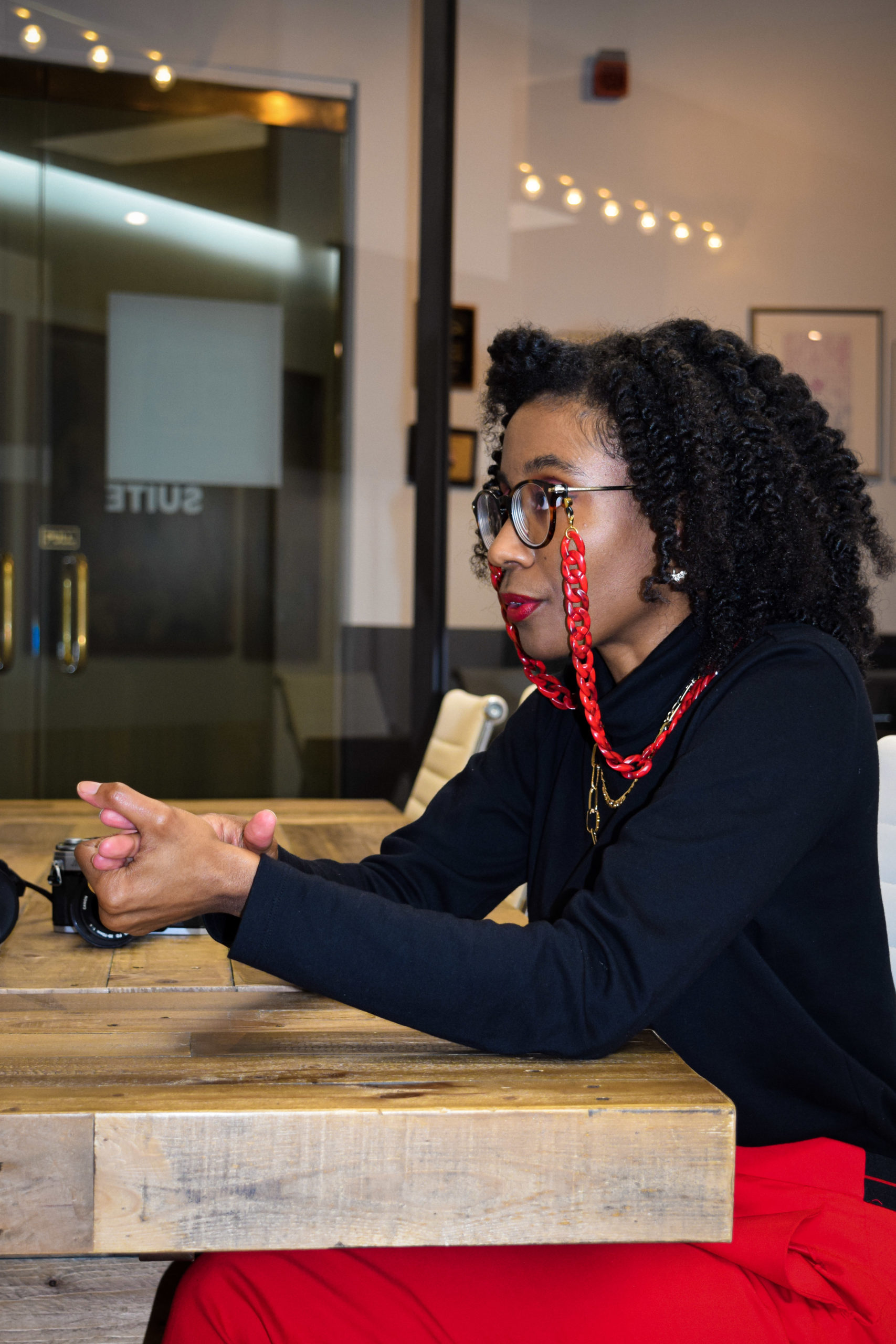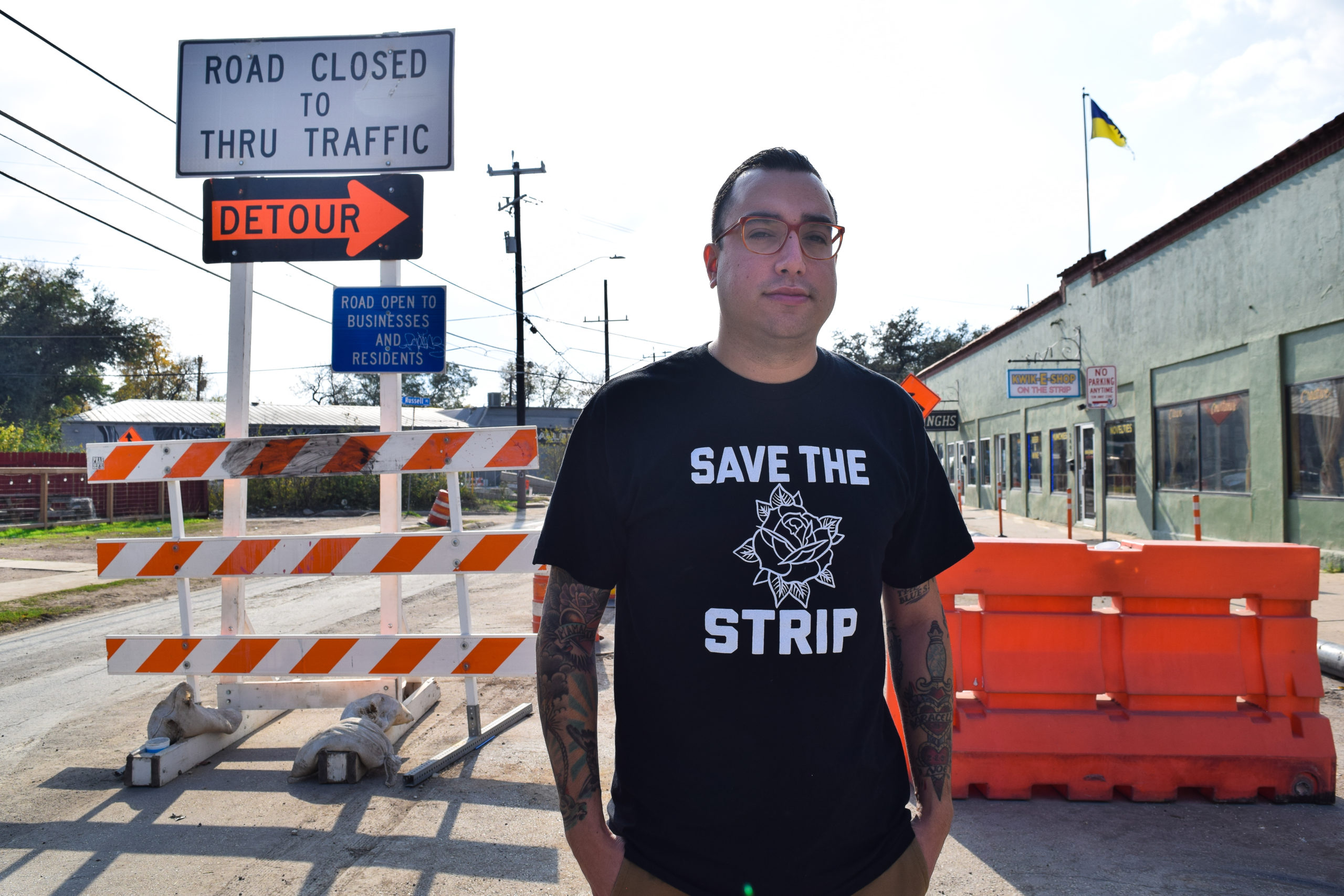The Redefining Professionalism series exists to amplify the diverse, individual experiences of entrepreneurs in the Boardroom across the city.
Photojournalism is important to the City of San Antonio. It’s capture of the realities of politics, movements, and even the Global Pandemic of COVID-19 have shaped how history will be written for generations to come. Black Freedom Factory acknowledges the truth that is incorporated into the efforts of journalism and individual identities captured – stories told for community, by community.
Meet Bria Woods – Trinity University Alumni – Executive Digital Producer at KAVU-TV, as well as Documentary and Portrait Photographer with work featured in the San Antonio Report, BBC News, and a most recent exhibit titled ‘The Black Herstory Project’.
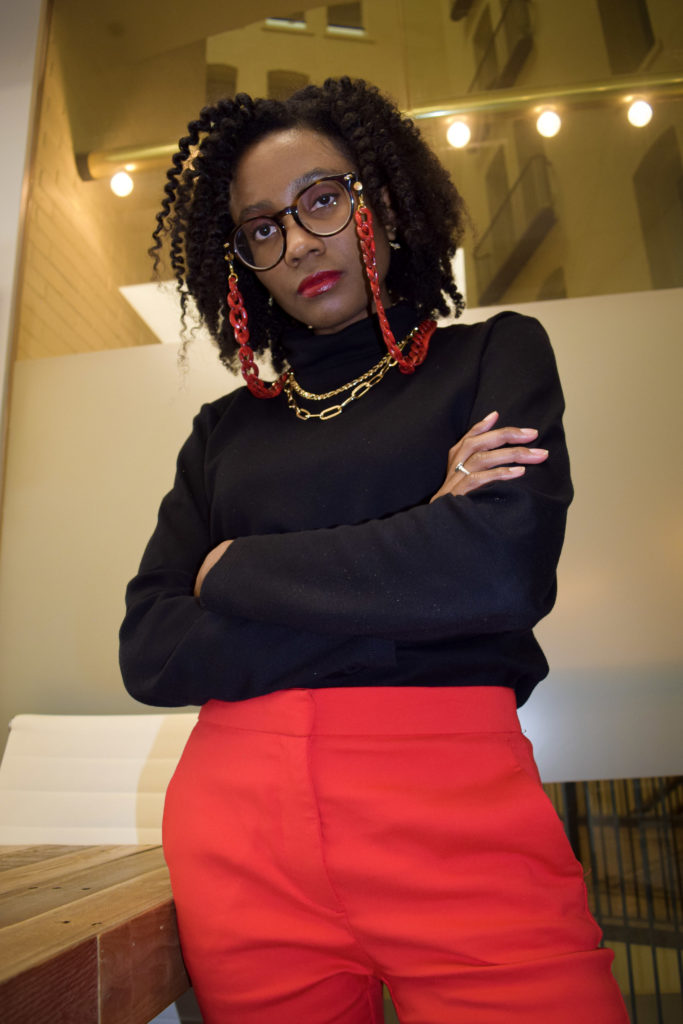
All Photos Courtesy: Ojodesofia Photography
Born and raised in Washington D.C, Bria says the Smithsonian was her playground.
“I love learning – education was huge in my household. Understanding the value of people, relationships, and knowledge. I think that shapes a lot of who I am.
I have a passion for storytelling, being around people and helping tell their story. I was studying schizophrenia and rats for 3 years – and being in a lab for 8 or 9 hours made me realize that science wasn’t my calling. People are.”
Attending Trinity University, and studying Communications with a minor in Film Studies, Woods credits her involvement with radio at KRTU – Tiger TV at Trinity.
“Once I graduated at Trinity, I went on to study abroad in London and obtained my Masters Degree in Multimedia Broadcast Journalism. That’s when I knew that photojournalism was it for me – this is what I wanted to do in my life.”
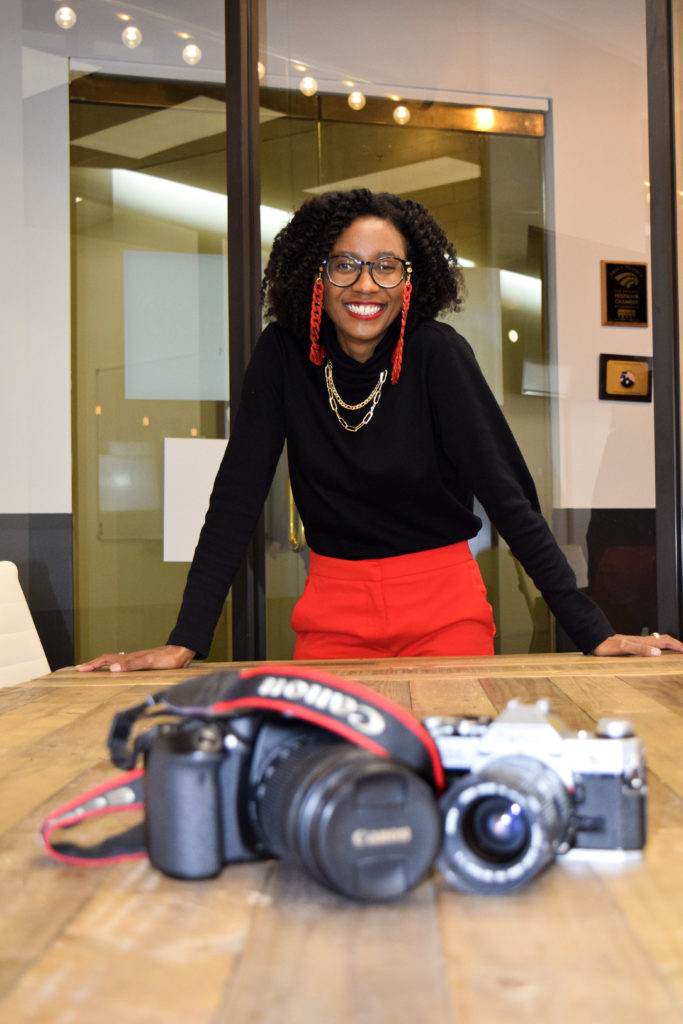
How has your experience in San Antonio capturing political movements and the essence of culture been?
Heavy – it’s been heavy. It’s heavy to capture grief. I remember last summer the first vigil I covered was the Healing Home Vigil for those who have lost family members to police brutality in San Antonio. There were so many waves of realization that I had. It’s not easy to put a camera in front of someone’s face when they’re grieving and that was a moment when I had to find a balance between honoring the moment, but not missing the moment. Also, the vigil for Darrel Zemault Sr. felt that way too.
I want you to know that a Black woman photographed these events. And I want you to know as a Black Woman, this impacts me personally too. I do have feelings about this – but I do feel that it is important that people can come up with their own feelings about what I am capturing too. It really is a balance.
Even though I have a duty to be objective as a photojournalist, I have a story too. And I believe it’s possible to allow my humanity to serve as a foundation to be able to tell stories – still objectively – but to be able to give it that hue of feeling and emotion.
What is your experience maintaining the separability of being a photojournalist and a Black woman in the Boardroom?
When I am pitching stories to my editor in the boardroom – especially emotional stories. I stand firmly on my own two feet and I mean what I say when I pitch a story in a way that gives the boardroom something to grasp on to.
I shouldn’t ever have to argue about whether or not it’s news-worthy. I just want people to know why I should be the one to tell the story – to cover it , photograph it. I understand that these stories can make people uncomfortable.
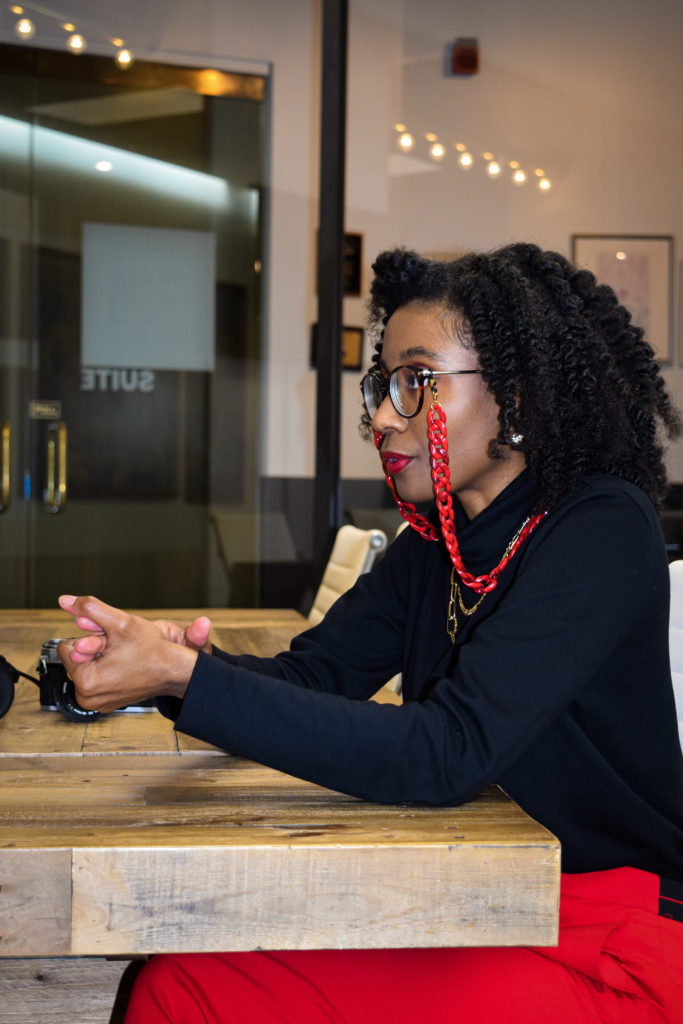
In my photojournalism – I have been approached about my expertise being a Black Woman in being authentic in approach to allyship in journalism. Questions like, ‘Can you look over the wording for our poster? Should I say Black or African-American? Should I say Happy Black History Month or Celebrate Black History Month?’
I appreciate their questions because I don’t feel like I’m being used as a ‘black google,’ I feel like they’re being respectful and allowing me to be a tangible resource for them. I’m very happy to share my knowledge and expertise and also recognize that I have a
lot to unlearn as well. I was subject to the same type of white-washed education that others have learned. I humble myself in that way and if I don’t know the answer to a question, I implore us to explore a solution together.
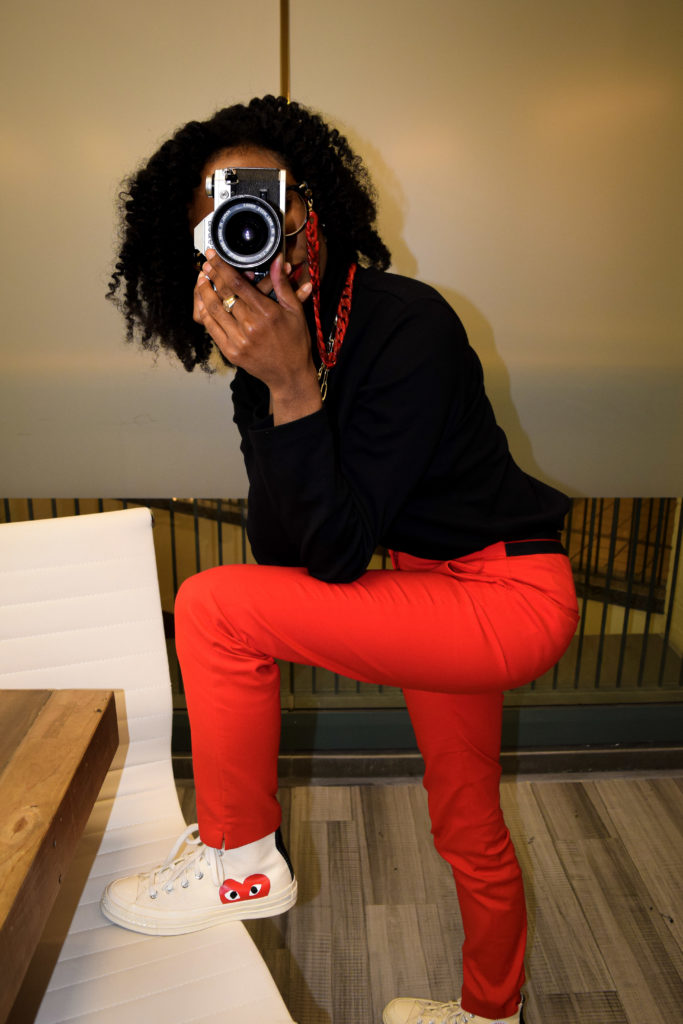
What does photojournalism mean to you as an individual experience?
Photojournalism is my first love. I’ve done fashion photography, product photography but photojournalism will always be my first love because what I can’t always say in writing, I can say in a photo. And through growth, internships, mentorship and feedback I’ve been able to get better at finding the frames to tell stories. You can find a lot in finding just one frame. When you do pair it with the words – you’ve got a whole masterpiece. The ability to say so much is what I love the most about photojournalism.
I realized that Photojournalism is my activism. I do have a duty and interest in being objective. But at the same token that doesn’t mean that I have to sterilize the truth. The truth does not have to be easy to sit with – that’s not my job. So I realized that through my internal battle of activism and my role in the moment, once I began covering more stories, I realized this is it. This is the way that I can contribute to #BLM, or advocate for any cause. This is how I can show up.
It’s visibility. People just want to be heard, people just want to be seen. They just want to know that their stories, their concerns matter. The citizens of the Alazan Courts – only ever wanted to be heard.
What do you want other photojournalists to know about your experience?
Your kit matters – having a good camera is important, having a camera that takes high resolution cameras, the right lenses depending on the photo you’re taking etc… , but don’t lose so much sleep over that or think that disqualifies you from telling a story. For example, the woman who filmed George Floyd’s murder, filmed it on a cellphone – that’s photojournalism. Work more on your storytelling skills, news gathering skills, and nurturing relationships.
When I am talking to someone to try to get their story, they don’t care about my experience. They want to know, ‘are you going to respect me?’ Before going and sticking cameras in people’s faces, you need to earn their trust. And you need to respect their space, their privacy and their story.
Building rapport is everything.
Considering bias in the media, what change do you want to see from the community of photojournalism?
We need to remember that the media is not the enemy. Media is anything communicated across a medium. What we need to start with is nuance and specificity. We’re doing a lot of broad-brushstrokes and overgeneralizations on the internet because it’s what can fit into 120 characters, and it’s got a nice bite or sound to it. But that’s not a nuanced argument, and that’s how we have gotten into a mess of demonizing the media in general.
Communicate with journalists where they went wrong with your story. I am not trying to hide my process. I want to be transparent about why I told this story this way, who I talked to. But I feel like somehow we have allowed people who know very little about journalism dictate what it really is. I have nothing to gain from manipulating a story. Journalism is a public service. I am here to inform you. Period.
How does bias in the media play into furthering stereotypes that fuel discrmination in the boardroom? How have you seen this play into the media and what work do you do to diminish that?
There’s an age old saying especially in broadcast, that they like to hire people that ‘look like the community that the station is in.’ That’s just gatekeeper-speech for we don’t want People of Color.
Whether you are predominantly in a white area or not, you need People of Color in your newsroom. Why? Because I can’t possibly be able to accurately see every kind of identity, reality or experience. It’s okay to acknowledge our limitations – but that’s why we need to have more diversity and inclusion in every newsroom.
Even as a black woman I have privilege – so I constantly ask myself how I’m using my privilege to bridge that gap for others who maybe don’t have my same privileges. But if I am not in the room to begin with, who’s advocating for my community?
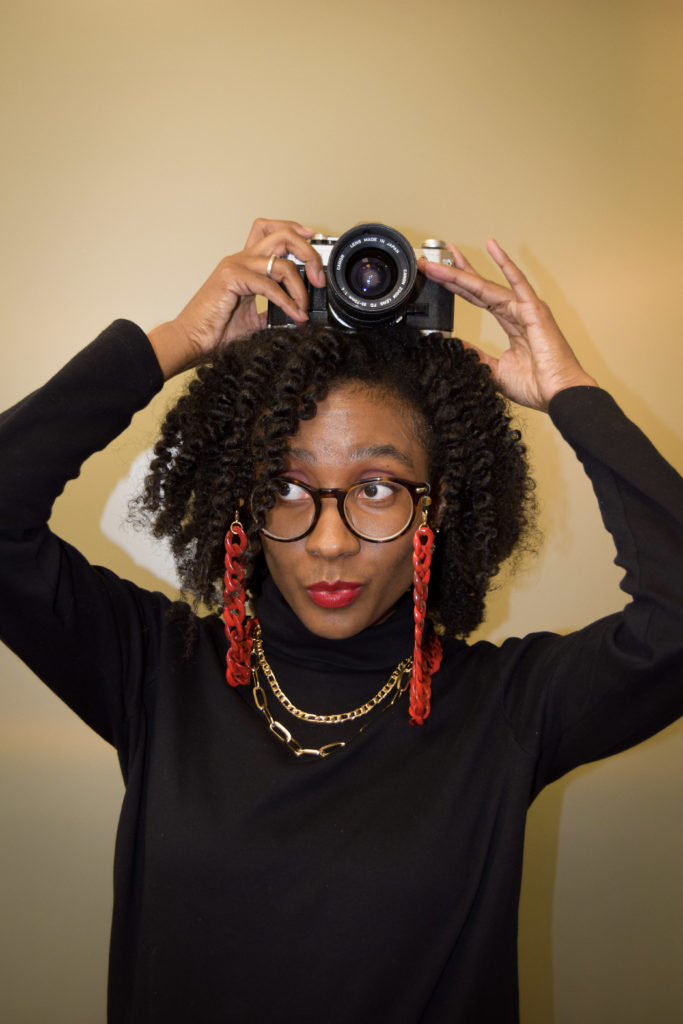
Woods shares her vision behind ‘The Black Herstory Project’, that is focused on Black Female Empowerment and Joy.
“While black women are still fighting for civil and social justice – we are human beings. We experience joy. Feel the full weight of it, this is our story. As a nation, regardless of race, creed, background, heritage. The timing of this project is immaculate. I feel like my ability to be able to view black women in this way is my ability to convey these images.”
The Exhibit is virtual and in-person experience, on view at the Impact Guild until March 31st.

